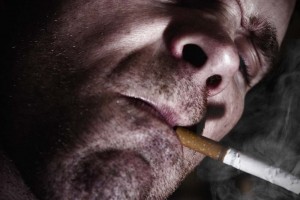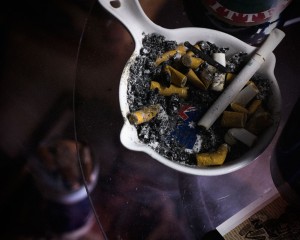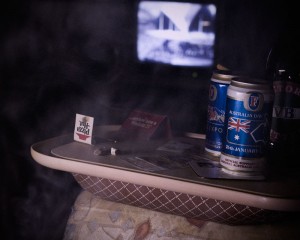Din Heagney gets between the covers of artist Brendan Lee‘s debut novel…
I’m still in Shanghai where summer hasn’t officially begun, yet I’m sitting in a puddle of my own sweat, trying to make sense of the months of research and notes I’ve compiled. I’m meant to be writing, but my words are flowing like molasses through a straw, as they say, so I’m stoked at the distraction of an email from Melbourne artist Brendan Lee announcing the launch of his debut novel.
Lee’s practice is based around the cultural and historical differences between Australian male cultures, those visceral characters layered under the stereotypes of larrikin, bogan and hoon. His photographic and filmic exhibitions have looked specifically at male competition, from burnouts to skate ramps. His work has been seen across the country and particularly memorable was his immense installation Proving Ground seen at ACCA and the Tate Modern. But this latest work moves out of the visual and into the textual. While Lee has written for numerous magazines and catalogues, a novel is an entirely different beast.
The hilarious title plays on Doris Pilkington Garimara’s 1996 novel and Phillip Noyce’s 2002 film adaptation, Rabbit Proof Fence. With an opening line like: “Emex needed to piss – really bad,” I knew I was in for a treat. The novel is divided into three acts, one set in the 1978, and the second is set ten years later in 1988 while the final act is twenty years on, in a more contemporary 2008. The setting is the fictional suburb of Satellite City, a residential experiment in the dusty western rings of Melbourne. From beer and bikes to drug deals and display homes, Lee tracks the aspirational development of his closer-to-home suburbanites. It’s a three-decade journey filled with pub rock and bad fashion, a bicentennial and suburban decay. Bogan Proof Fences is heavily laden with pop culture references and it’s enough to keep you visiting the fridge for another stubby, at least until you find out toward the end where the title really comes from.
In the first act, a group of westie kids out on their skateboards discover a dead body on a steaming hot Australia Day Long Weekend. Meanwhile, a CFA volunteer, lined up in the pub with all the other locals, tells Emex’s dad that his son should get off those toys and “play footy, ya know. Like a real man.” It’s the start of further rejections or deliberate omissions of Aussie masculinity, where the boys are still defined by their brand names, as much as any other subculture, but more so by the social mores of the time. The clothes, cars and bikes of the Satellite City boys become identifiers not only for them but also for the reader as cultural and historical markers.
Lee uses numerous, often passing, references to Melbourne’s historical figures. Early on in a section about suburban development, he writes: “John Pascoe Fawkner would have cried into his beads and blankets if he’d seen what they’d done.” He’s referring to the same Fawkner who was the son of a convict, and later came to settle Melbourne on the Enterprize (the schooner, not the starship) and beat Batman (John, not the superhero) in the race to start an imported settlement on the Yarra.
While these kinds of historical nods may be lost on some readers, they give the story an embedded place and bring gravitas to the land itself as a character. Lee describes it at one point as “the layers of topsoil stripped from ten thousand quarter acre blocks … like a dehydrated lake of no-name-brand packet tomato soup.” It’s this type of writing that makes his novel deeply accessible, written in a style that roams between broad Aussie vernaculars and poetic but unpretentious phrasing.
There’s something decidedly autobiographical in Bogan Proof Fences: Lee grew up in the inner western suburbs and he’s always mucked about on skateboards and relished teenage larks on his bike while maintaining a serious arts practice. There’s also a winking nostalgia throughout Bogan Proof Fences and Lee’s words recreate the scorching summers and slow days that ticked over, measured only by beers and footy fixtures. It’s a window into a unique Australian culture that’s almost disappearing through urbanisation, but it’s a culture Lee has maintained over the last decade, an isolated pocket of unbridled Australian masculinity.
I asked Brendan Lee a few questions before the launch of his book last Saturday….
DH: Your practice has consistently been based in the male culture of western Melbourne. You seem to celebrate and defend it, in a way that we’ve seen in the work of artist John Campbell and films like Animal Kingdom. Do you think there are discrepancies in the way we Australians perceive our national identity and ourselves?
Brendan Lee: The west is a grey area for me. I grew up in Melton and isolated myself from the bogans and hoons by not playing footy or getting a driver’s license until I hit 30 (I still haven’t been to the footy). The demographics and social interactions out west are a real inspiration to my practice and a few other artists due to the left field nature of what you find. The dilemma an artist faces when creating works inspired by the west is either cultural elitism, exploitation or one-eyed parochialism. My works sit between these three interactions as observations. I do play the ‘from the west’ card a bit as a way of validating some of the questions I ask through my art although celebrating the otherness of it all at the same time. All of my works involve an outsider coming into someone else’s territory (think Wake in Fright) and what they’d make of it all. I look at the west as being like sticking your finger into a pie from the servo to see what it’s made of – you’re not going to eat it just curious enough to look. Our Australian image is based on nostalgia. Paradoxically, I think Tony Abbott portrays the Australian national identity to perfection. Conservatism, phobic of everything since modernism and a bogan. He’s an interesting character study if you want to see what Australian identity is today…he’s trying to become the stereotype.
DH: The story opens on an unseasonably hot and dusty Australia Day Long Weekend, an event that often figures as a subject in your work. Do you use this as an Australia milieu or for some other reason?
BL: I often associate the hot and dusty weather with a sense of loss; the loss of a shared cultural (European) memory of green pastures and an abundance of water. It’s also a personal thing, whereby a dirty stinking hot public holiday is a day lost, spent bunkered down trying to stay cool and out of the light.
DH: How autobiographical is Bogan Proof Fences for you?
BL: Most of what I’ve written comes from events in and around Melton, stories I’ve heard, rumours, generalisations and observations I’ve made out in Point Cook and Caroline Springs. The historical aspect is pretty much accurate with a lot of research going into dates and plans outlined for the Satellite City projects and Caroline Springs. I’ve sprinkled it with a fair coating of what I now know as auto-fiction to tie it all together. I didn’t realise you could get away with this until I read Tony Bitch’s novel Shadowboxing. I guess this is my autobiography although for legal reasons (a nod to Frank Hardy’s Power Without Glory) it’s all made up from the depths of my imagination.
DH: Up until now your practice has largely consisted of works in sculpture, installation, photography, video and sound. What made you want to work in the written novel format, is this some kind of ‘bible’ for your oeuvre?
BL: Originally, Bogan Proof Fences was to be a feature length film. In some ways it’s a template for my next five years work. I have five-year plans and the start of this one involved creating a substantial body of work that encapsulated all of my previous series. A novel seemed logical, and – when I broke it down into smaller parts, act and chapters – seemed achievable. An installation, which is at the Centre for Contemporary Photography from June 16, is directly sourced from the book, as is the next Jenny Port show.




correction…it’s Tony Birch…
oops, what a b*tch…